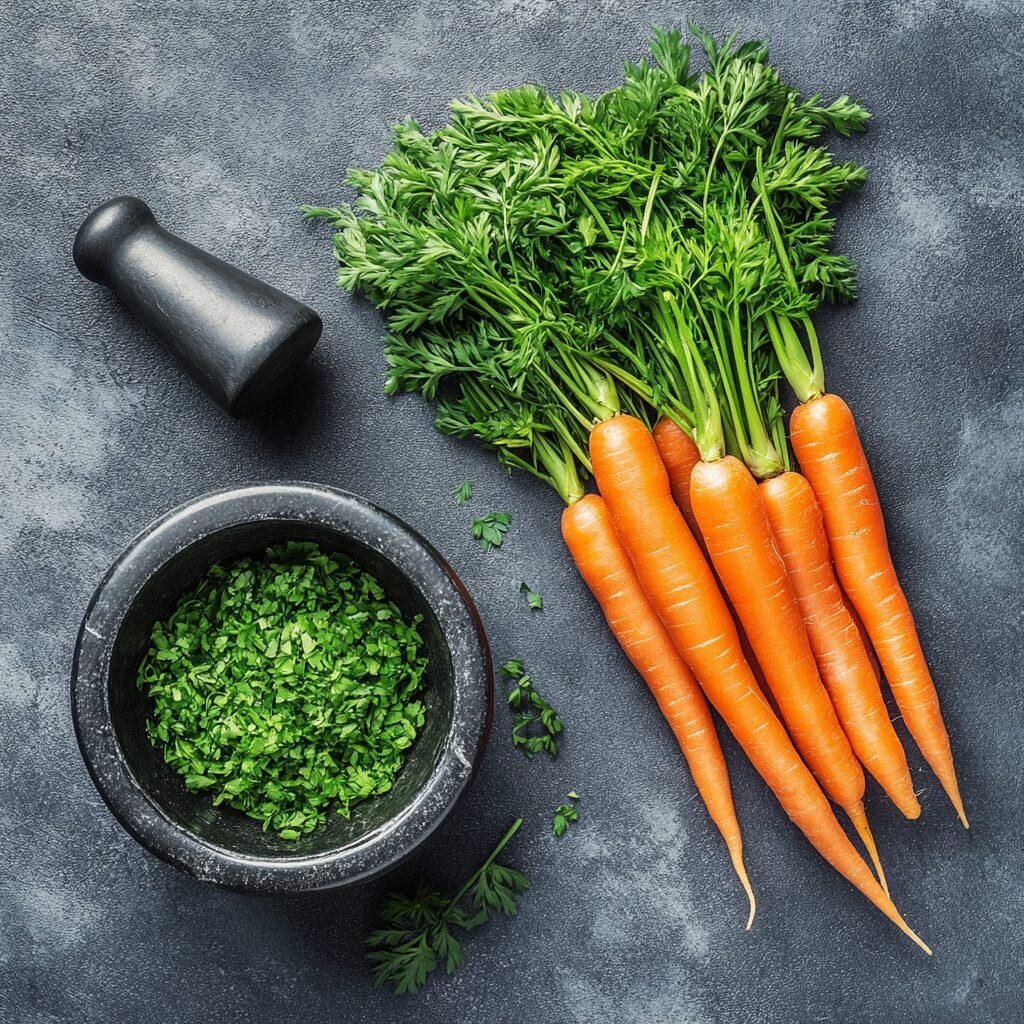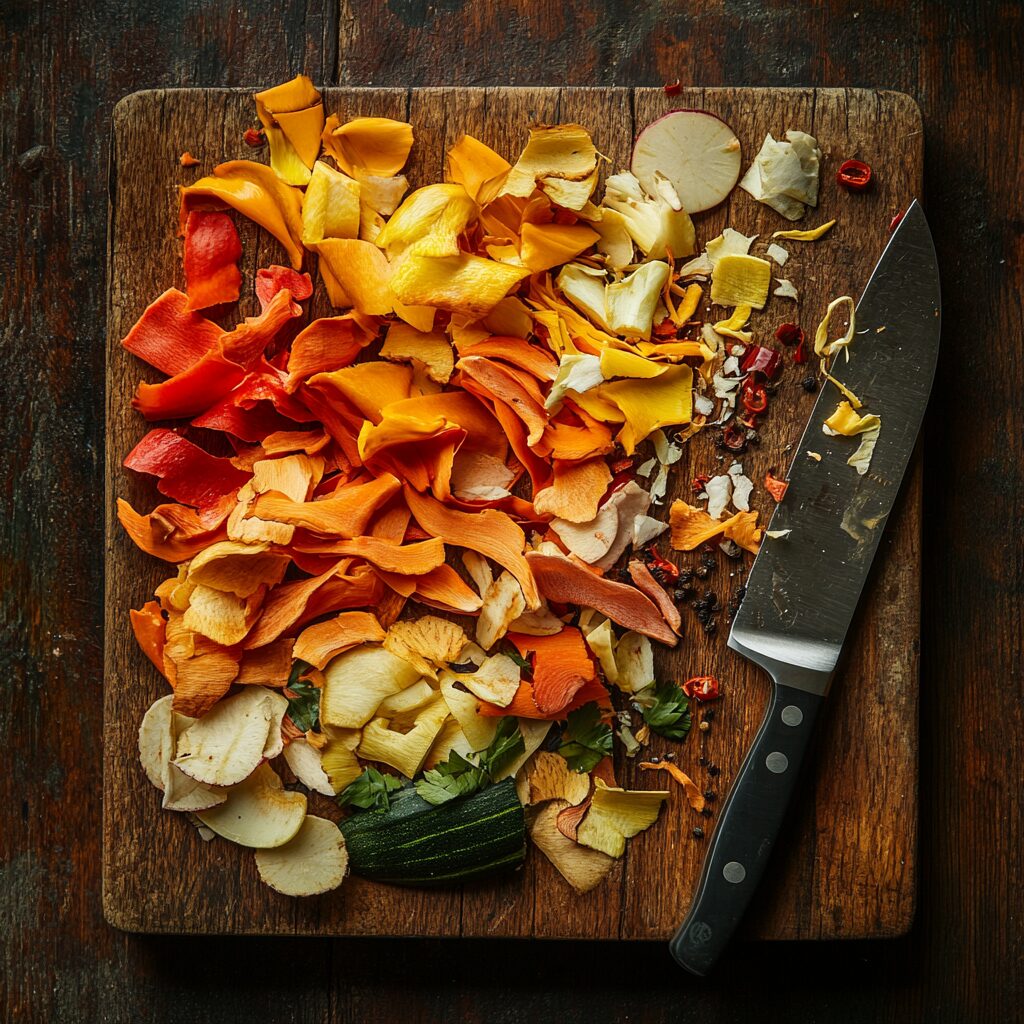Did you know that Americans waste a staggering 60 million tons of food every year? That’s nearly 40% of the entire U.S. food supply! But here’s the kicker: much of what we’re tossing in the trash is actually packed with nutrients and flavor. From veggie tops to fruit peels, we’re unknowingly discarding some of the best parts of our food.
Broccoli stems are a crunchy delight

When it comes to broccoli, most people focus on the florets and discard the stems. But hold on! Those sturdy stalks are not only edible but downright delicious. Broccoli stems are packed with fiber, vitamins C and A, and calcium. They have a milder flavor than the florets and a satisfyingly crunchy texture.
To prepare broccoli stems, simply peel off the tough outer layer with a vegetable peeler. You can then slice them thinly for a crunchy addition to salads, or dice them for stir-fries. For a gourmet touch, try using a spiralizer to create broccoli stem noodles as a low-carb pasta alternative. Reducing food waste has never been so tasty!
Pro tip: Next time you’re making broccoli soup, throw in the chopped stems along with the florets. They’ll add extra body and nutrition to your dish without altering the flavor.
Watermelon rinds are more than just compost fodder
When you finish that juicy slice of watermelon, don’t toss the rind! This often-discarded part of the fruit is not only edible but also surprisingly versatile. Watermelon rinds are rich in citrulline, an amino acid that may help improve cardiovascular health and reduce muscle soreness.
In the southern United States, pickled watermelon rinds are a traditional treat. To make them, simply peel off the green outer skin, cut the white rind into chunks, and pickle them in a vinegar brine with spices. The result? A tangy, slightly sweet condiment that pairs wonderfully with barbecued meats or cheese plates.
For a refreshing twist, try adding diced watermelon rind to your fruit salads or smoothies. It has a cucumber-like crunch and a mild flavor that won’t overpower other ingredients. By using the whole watermelon, you’re not just reducing waste – you’re expanding your culinary horizons!
Carrot tops are a flavorful herb substitute

Next time you buy carrots with the greens still attached, don’t automatically reach for the trash can. Those feathery carrot tops are not only edible but also packed with nutrition. They’re rich in vitamin C, calcium, and potassium, making them a healthy addition to your meals.
Carrot tops have a slightly bitter, parsley-like flavor that works well in a variety of dishes. Try chopping them finely and using them as you would herbs in salads, soups, or pesto. They make an excellent garnish for roasted vegetables or as a flavor boost in homemade vegetable stock.
For a unique twist, try making carrot top chimichurri. Simply blend the carrot greens with garlic, olive oil, vinegar, and spices for a zesty sauce that pairs beautifully with grilled meats or roasted vegetables. It’s a delicious way to reduce food waste and add a new flavor to your culinary repertoire.
Celery leaves are bursting with flavor
How often have you bought a bunch of celery, only to discard the leafy tops? Those leaves are not just garnish – they’re a powerhouse of flavor and nutrition. Celery leaves contain more calcium, potassium, and vitamin C than the stalks.
The leaves have a more intense celery flavor than the stalks, making them perfect for adding depth to soups, stews, and salads. Try chopping them finely and using them as you would parsley or cilantro. They’re particularly delicious in potato salad or as a flavor enhancer in stuffing recipes.
For a quick and easy seasoning, dry the celery leaves and crumble them into a powder. This homemade celery salt is perfect for rimming a Bloody Mary glass or adding a savory kick to roasted vegetables. By using the whole celery plant, you’re getting more bang for your buck and reducing food waste at the same time.
Citrus peels are a zesty treasure trove

When life gives you lemons (or oranges, or limes), don’t just use the juice and toss the rest. Citrus peels are packed with flavor and have a multitude of uses in the kitchen. They’re rich in vitamins, minerals, and antioxidants, particularly in the form of flavonoids which may have anti-inflammatory properties.
The zest of citrus fruits is a well-known flavor enhancer in baking and cooking. But don’t stop there – the white pith, while bitter, is edible and full of pectin and flavonoids. Try candying citrus peels for a sweet treat, or infusing them in vinegar or oil for flavorful dressings.
For a refreshing drink, steep citrus peels in hot water for a caffeine-free tea. Or, dry the peels and grind them into a powder for a zesty seasoning blend. By using the whole fruit, you’re not only reducing waste but also adding a burst of flavor and nutrition to your meals.
Beet greens are nutrient powerhouses
When you buy beets, do you immediately chop off and discard the leafy tops? If so, you’re missing out on a nutritional goldmine. Beet greens are edible and incredibly nutritious, packed with vitamins K, A, and C, as well as minerals like iron and magnesium.
These greens have a mild, slightly sweet flavor similar to Swiss chard. They can be used in much the same way as other leafy greens like spinach or kale. Try sautéing them with garlic and olive oil for a simple side dish, or add them to soups and stews for an extra nutrient boost.
For a unique salad, try mixing raw, finely chopped beet greens with roasted beets, goat cheese, and a tangy vinaigrette. By using both the roots and the greens, you’re getting two vegetables for the price of one and reducing food waste in the process.
Squash seeds are crunchy snacks waiting to happen
When preparing squash – whether it’s pumpkin, butternut, or acorn – don’t toss those seeds! Squash seeds are not only edible but also packed with nutrients like magnesium, zinc, and omega-3 fatty acids. They’re also a great source of plant-based protein.
To prepare squash seeds, rinse them to remove any pulp, then pat them dry. Toss them with a little oil and your favorite seasonings – salt, pepper, and smoked paprika make a delicious combination. Roast them in the oven until they’re golden brown and crunchy.
These roasted seeds make a great snack on their own, but don’t stop there. Try using them as a crunchy topping for salads, soups, or even yogurt parfaits. They add a delightful texture and nutty flavor to baked goods like muffins or granola bars. By using the whole squash, you’re getting more nutritional bang for your buck and reducing food waste.
Apple cores are the secret to homemade vinegar
When you finish eating an apple, what do you do with the core? If you’re tossing it in the trash, you’re missing out on a fantastic opportunity. Apple cores, along with peels, can be transformed into homemade apple cider vinegar.
To make apple cider vinegar, simply collect your apple scraps in a jar, cover them with water, and add a bit of sugar. Cover the jar with a cloth and let it ferment for a few weeks. The result is a tangy, flavorful vinegar that’s perfect for salad dressings, marinades, or even as a health tonic.
If vinegar-making isn’t your thing, apple cores can still be put to good use. They can be simmered with cinnamon sticks and cloves for a fragrant potpourri, or added to your compost bin to enrich your garden soil. By finding creative uses for apple cores, you’re reducing waste and getting more value from your produce.
From broccoli stems to apple cores, it’s clear that many parts of our food that we typically discard are not only edible but also nutritious and flavorful. By embracing these often-overlooked parts of our fruits and vegetables, we can reduce food waste, save money, and discover new culinary possibilities. So the next time you’re in the kitchen, take a second look at those peels, stems, and leaves – you might just find your new favorite ingredient hiding in plain sight. Remember, in the quest for sustainable eating, sometimes the best part is what you almost threw away!

